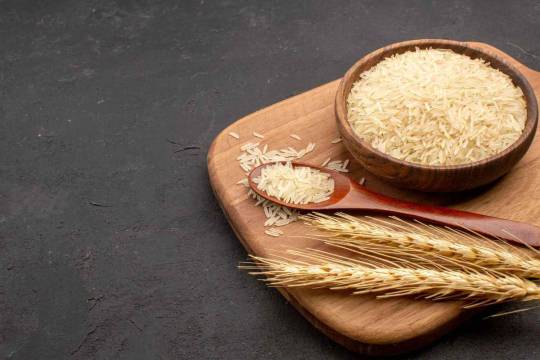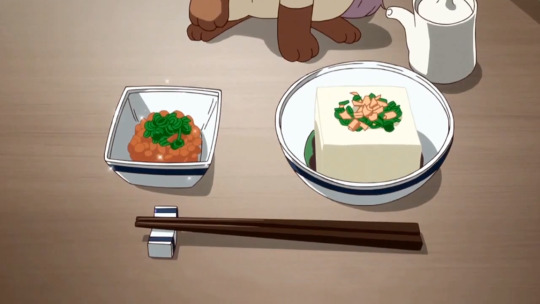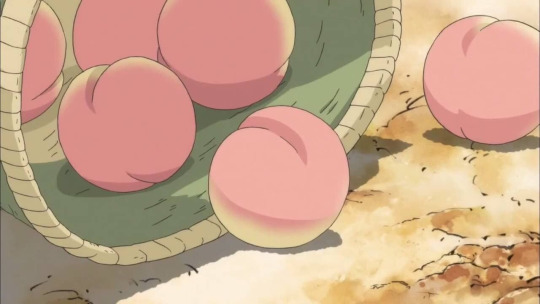#Rice export Ban
Explore tagged Tumblr posts
Text
Govt Lifts Ban On Non-Basmati White Rice Export, Traders Hail Move
New Delhi: The Centre lifted the ban on the export of non-basmati white rice on Friday with immediate effect, according to a notification. In July 2023, the government imposed the ban to ensure the domestic supply of rice and keep prices under control. Exporters hailed the decision, dubbing it a “game-changer” for the sector. “India’s bold decision to lift restrictions on non-basmati white rice…
0 notes
Text
Rice Export from India Latest News on Global Challenges
The latest news on Rice Export from India is regarding the ban on exporting non-basmati white rice. This decision by the Indian Govt. doesn’t apply on the export consignments already in the process of loading.

This ban may impact around 80 percent of India’s rice exports and could affect global rice prices negatively.
#news#rice export ban#non-basmati#Rice Export from India#global impact#global challenges#tumblr#blogging#bloggers#blog#people#decisionmaking
1 note
·
View note
Text
Indian rice export ban to impact millions in Asia

India is one of the world’s largest producers and exporters of rice, and while basmati rice is perhaps the most well-known variety, the country also exports substantial quantities of non-basmati rice. Non-basmati rice refers to various types of rice that are not classified as the premium basmati variety. These non-basmati varieties are grown across different regions of India, each contributing to the overall export of rice from the country.
Varieties of Non-Basmati Rice: Non-basmati rice comprises a diverse range of rice varieties, each with its own unique characteristics in terms of grain size, shape, color, aroma, and taste. Some of the common non-basmati rice varieties that India Rice export include:
Common White Rice: This variety is usually short to medium-grain and is often used as a staple food in various regions. It has a neutral flavor and is versatile for use in a variety of dishes.
Parboiled Rice: Also known as “converted rice,” parboiled rice is treated with steam and then dried before milling. This process partially cooks the rice, making it more nutritious and less likely to stick together when cooked.
Long-Grain Rice: Long-grain non-basmati rice varieties are slender and elongated. They are known for their separate, fluffy grains when cooked.
Medium-Grain Rice: This variety has grains that are shorter and plumper than long-grain rice, but they still remain separate and slightly sticky after cooking.
Short-Grain Rice: Short-grain non-basmati rice varieties have a higher starch content, making them slightly sticky when cooked. They are often used in dishes that require a stickier texture, such as sushi.
Jasmine Rice: While primarily associated with Thai cuisine, jasmine rice is also grown in India and exported. It has a distinct aroma and a slightly sticky texture.
Export Markets: India’s non-basmati rice finds its way to a multitude of international markets. Countries in Africa, the Middle East, Southeast Asia, and even some parts of Europe are prominent importers of Indian non-basmati rice. The affordability and versatility of these rice varieties make them attractive options for countries with diverse culinary preferences and economic considerations.
Export Process: The export process for non-basmati rice involves several stages:
Production: Non-basmati rice is cultivated in various states across India, including West Bengal, Andhra Pradesh, Punjab, Uttar Pradesh, and others. The crop is sown, cultivated, and harvested based on the specific requirements of each rice variety
Processing and Milling: After harvest, the rice grains are separated from the husk and undergo milling to remove the outer layers, resulting in polished rice that is ready for consumption.
Quality Control: Quality checks are carried out to ensure that the rice meets both domestic and international quality standards. Factors such as grain size, color, moisture content, and impurities are assessed.
Packaging: The rice is then packaged in various sizes and formats, ranging from bulk shipments to consumer-sized packages.
Export and Logistics: Exporters work with shipping and logistics companies to transport the rice to international markets. India Rice export documentation, including invoices, certificates of origin, and quality certificates, is prepared.
Importing Countries’ Regulations: The importing countries’ regulations, including food safety standards and quarantine requirements, must be adhered to. These regulations can vary significantly from one country to another.
Market Distribution: Once the rice reaches its destination, it is distributed through various channels, including wholesalers, retailers, and foodservice providers.
Challenges and Opportunities: While India is a major player in the global non-basmati rice market, there are certain challenges and opportunities that the industry faces:
Challenges:
Quality Consistency: Maintaining consistent quality across different batches and varieties of non-basmati rice is a challenge, as it can impact consumer preferences and international trade relationships.
Competition: India faces competition from other rice-exporting countries like Thailand, Vietnam, and Pakistan. Price competitiveness and quality differentiation are essential to maintain and expand market share.
Infrastructure and Logistics: Efficient transportation and storage infrastructure are crucial to prevent spoilage, especially in the context of bulk shipments.
Opportunities:
Diversification: India can focus on promoting specific non-basmati rice varieties that have unique characteristics, flavours, or nutritional benefits, creating a niche market.
Value Addition: Investing in technologies for value addition, such as fortified rice or ready-to-cook products, can enhance the appeal of Indian non-basmati rice in global markets.
Sustainability: Emphasising sustainable and organic farming practices can attract consumers who prioritise environmentally friendly products.
In conclusion, India’s exports of non-basmati rice play a significant role in its agricultural economy and international trade. These rice varieties cater to a wide range of culinary preferences across the globe, and while challenges exist, the potential for growth and innovation remains substantial.
0 notes
Video
youtube
India's Rice Export Ban | காரணம் என்ன ? Global Rice Crisis
Global Rice Crisis | Rice is a staple for more than 3 billion people, and nearly 90% of the water-intensive crop is produced in Asia, where the dry El Nino weather pattern is likely to curb supplies.
#youtube#riceban india rice ukraine russia blacksea#rice#rice exporters in india#rice ban#globalcrisis#global crisis
0 notes
Text
Kirigakure Worldbuilding II - Specialties

Inspired by a recent conversation I had with @pxssy-stuntin-for-itxchi, I got wanted to add more to my Kirigakure worldbuiling post!

Food Preservation Since except for a month during the winter, it never really gets cold in Kirigakure. This has lead to its citizens becoming very creative at enhancing the shelf life of the food that they have. Meat/fish is dry-aged and smoked, fruits are turned into preserve, cheong, or slow-dried. Dairy is a luxury in the water realm, so there are a lot of plant based dairy alternatives already, so it’s no surprise the wave realm has a quite big vegetarian and vegan population. Even though their spice tolerance is not the highest, when talking SALT tolerance, no village can beat Kiri. They are VERY generous with salting their food. In order to get a smokey flavor to any dish, you can obtain smoked salt everywhere in the country. The water realm was the first region the come up with the concept of fermentation of food. Milk is turned into yoghurt and cabbage is turned into kimchi and its more popular variant - sauerkraut. Fun fact: Suigetsu comes from a high ranking caste, so he actually was able to afford dairy yoghurt and jello with actual gelatine, and they're his favorite foods.

Kimchi and Sauerkraut
The general spice tolerance of Kiri citizens is not the highest across the shinobi world, so kimchi is mostly exported to Konoha and Suna. The cabbage grown in the water realm is specifically bred to be extra heat resistant and crunchy. In order to cut down on waste, the excess is turned into sauerkraut juice. To put less of a strain on the public healthcare system, the water realm government has issued its citizens to exercise and eat healthy – especially children. To get more children to drink sauerkraut juice, it is produced in portable, biodegradable little juice boxes which are handed out for free in the Kirigakure academy. Every Kiri genin has tasted it atleast once. Scurvy was once a big problem for most shinobi going on long term stealth missionas, since most just lived off dried meat and crackers, except for Kiri Nin, since they always carry sauerkraut juice (and kumquats) with them.

Fruit
Mangos: With their sweet and fruity taste, they’re popular amongst children, especially when dried, rolled into balls with an added sugar crust. While other countries see them as a special treat they’re a staple in Kiri. Papaya: Another Kiri staple. It is eaten either as a fruit in its orange form or in its green form in more hearty dishes. The seeds are ground and sold as a pepper alternative. Its extracts of the are used by the Kiri beauty industry, which is the biggest one, closely followed by Suna's beauty industry. Peaches: Often grown on the mountaintops of the water realm, they’re loved all over the country. Peach trees are seen as a sign of fertility, renewal and good luck. The pits are turned into persipan, which many foreigners don't like. Durian: Those stinky fruit are banned in Kiri’s public spaces. However, it is still the most popular fruit overall, so only a few get exported yearly, much to the other countries' durian lovers' chagrin. Jackfruit: Not a lot of Kiri citizens like its fleshy texture but it is often used as meat alternative by Kiri’s large plant-based population. Lychee: They’re often sugared and canned, or added to jelly. They're amongst the most popular fruit to make cheong with.
Kumquat: Kiri nin love them because they’re basically easily portable, vitamin c filled snacks. Other honorable mentions include: Rambutan, Mangosteen, Starfruit, Cherimoya, Soursop, Yuzu and Tamarillo.

Jelly If you’ve read my last post on Kiri specialties, you probably know that instead of manufactured candy, Sweet tooths (teeth?) in Kiri chomp down on dried fruit, fermented sugary sticky rice and – jelly. Gelatine, like most non fish animal products, is a luxury so most jellies are made with agar-agar, a plant based “gelatine”. Just take some fruit juice and set it with agar – and there you have jelly. Most foreigners find Kiri’s obsession with jelly pudding off-putting, but that doesn’t stop them. Fun fact: Suigetsu comes from a high ranking caste, so he actually was able to afford dairy yoghurt and jello with actual gelatine, and they're his favorite foods. Non food fun fact: As genetic engineering gets more advanced and Kirigakure already having no issues using bacteria, they're also the biggest exporter of nutrient agar for agar plates which are used for the cultivation of bacteria and funghi. Kigakure is the leading village when it comes to biological and medical advancements, which is why Orochimaru has visited very often (and eventually ran into Kimimaro)

#naruto headcanons#naruto shippuden#naruto#naruto imagines#naruto scenarios#akatsuki#naruto fanfiction#headcanons#fanfiction#suigetsu headcanons#suigetsu#naruto meta#kirigakure headcanon#kisame headcanons#kisame hoshigaki#kimimaro#orochimaru#zabuza momochi
99 notes
·
View notes
Text
4 notes
·
View notes
Text
Intricate, invisible webs, just like this one, link some of the world’s largest food companies and most popular brands to jobs performed by U.S. prisoners nationwide, according to a sweeping two-year AP investigation into prison labor that tied hundreds of millions of dollars’ worth of agricultural products to goods sold on the open market.
They are among America’s most vulnerable laborers. If they refuse to work, some can jeopardize their chances of parole or face punishment like being sent to solitary confinement. They also are often excluded from protections guaranteed to almost all other full-time workers, even when they are seriously injured or killed on the job.
The goods these prisoners produce wind up in the supply chains of a dizzying array of products found in most American kitchens, from Frosted Flakes cereal and Ball Park hot dogs to Gold Medal flour, Coca-Cola and Riceland rice. They are on the shelves of virtually every supermarket in the country, including Kroger, Target, Aldi and Whole Foods. And some goods are exported, including to countries that have had products blocked from entering the U.S. for using forced or prison labor.
Many of the companies buying directly from prisons are violating their own policies against the use of such labor. But it’s completely legal, dating back largely to the need for labor to help rebuild the South’s shattered economy after the Civil War. Enshrined in the Constitution by the 13th Amendment, slavery and involuntary servitude are banned – except as punishment for a crime.
That clause is currently being challenged on the federal level, and efforts to remove similar language from state constitutions are expected to reach the ballot in about a dozen states this year.
Some prisoners work on the same plantation soil where slaves harvested cotton, tobacco and sugarcane more than 150 years ago, with some present-day images looking eerily similar to the past. In Louisiana, which has one of the country’s highest incarceration rates, men working on the “farm line” still stoop over crops stretching far into the distance. {read}
#article#prison#labor#workers#this is capitalism#capitalism is a scam#capitalism is violence#AP#associated press#slavery#13th amendment
7 notes
·
View notes
Text

HÀNH TRÌNH 13 NĂM CỦA VINIMEX – NIỀM CẢM HỨNG TỪ TRUYỀN THỐNG NÔNG NGHIỆP NGÀN ĐỜI…
[English below]
"Ta không được chọn nơi mình sinh ra, nhưng ta được chọn cách mình sẽ sống" – Đây là triết lý mà bà Trần Vũ Quỳnh Như, Founder và CEO của Vinimex Group, luôn tâm đắc. Từ niềm cảm hứng sâu sắc về nền nông nghiệp Việt Nam hơn 4000 năm lịch sử, bà Như đã tạo nên hành trình 13 năm đầy tự hào cho VINIMEX. Được dẫn dắt bởi niềm đam mê và sự biết ơn đối với những sản vật mà mẹ thiên nhiên ban tặng, VINIMEX đã và đang góp phần đưa nông sản Việt vươn xa ra thế giới.
Trong suốt hành trình phát triển, VINIMEX không chỉ là một công ty xuất nhập khẩu nông sản mà còn là biểu tượng cho tình yêu và khát vọng lớn lao về một nền nông nghiệp bền vững. Từ những sản phẩm như khoai mì, gạo, hạt điều đến cà phê, trà và hạt tiêu, VINIMEX đã trở thành cầu nối vững chắc giữa nông sản Việt và thị trường quốc tế.
Việt Nam, với sự đa dạng về khí hậu và thổ nhưỡng từ Bắc chí Nam, đã tạo nên một nền nông nghiệp phong phú. Miền Bắc nổi bật với bốn mùa đậm sắc, đồng bằng châu thổ sông Hồng trù phú, mang lại nhiều sản vật quý giá. Miền Trung kiên cường, vượt qua khắc nghiệt của thời tiết, là vùng đất cằn nhưng sinh hoa trái, nơi các nông sản đặc biệt được trân quý. Miền Nam với ưu thế hệ thống sông ngòi và kênh rạch chằng chịt góp phần tạo nên vựa lúa chính của cả nước, có nguồn trái cây, thủy sản dồi dào.
Khởi đầu với một đội ngũ nhỏ hơn 10 người, đến nay VINIMEX đã phát triển mạnh mẽ với hơn 200 nhân sự tại các thị trường trọng điểm như Việt Nam, Campuchia, Myanmar và Philippines.
Hành trình 13 năm chỉ là khởi đầu – Bà Như và đội ngũ VINIMEX tiếp tục hướng tới tương lai, góp phần thúc đẩy nền nông nghiệp Việt Nam phát triển bền vững, không chỉ trong nước mà còn trên toàn thế giới.
—-
VINIMEX 13-YEAR JOURNEY – INSPIRATION FROM AN AGE-OLD AGRICULTURAL TRADITION…
"We cannot choose where we are born, but we can choose how we will live" – This is the philosophy that Ms. Tran Vu Quynh Nhu, Founder and CEO of Vinimex Group, holds dear. Inspired by Vietnam's rich agricultural history spanning over 4000 years, Ms. Nhu has proudly led VINIMEX through a remarkable 13-year journey. Driven by a passion for and gratitude toward the gifts of Mother Nature, VINIMEX has played an integral role in bringing Vietnamese agricultural products to the global market.
Throughout its development, VINIMEX has not only been an agricultural import-export company but also a symbol of love and aspiration for a sustainable agricultural future. From products like cassava, rice, and cashews to coffee, tea, and pepper, VINIMEX has become a strong bridge connecting Vietnamese produce with international markets.
Vietnam, with its diverse climate and soil stretching from North to South, boasts a rich agricultural heritage. The North is distinguished by its four vibrant seasons and the fertile Red River Delta, yielding many valuable products. The Central region, resilient in the face of harsh weather, is a land of arid soil that still bears fruit, where unique agricultural products are highly cherished. The South, with its vast Mekong Delta, is abundant with rice, fruit, and seafood, serving as the nation's food basket.
Starting with a small team of fewer than 10 people, VINIMEX has since grown to a strong force of over 200 employees in key markets such as Vietnam, Cambodia, Myanmar, and the Philippines.
The 13-year journey is just the beginning – Ms. Nhu and the VINIMEX team continue to look toward the future, contributing to the sustainable development of Vietnam's agriculture, not only domestically but also globally.
-----
CÔNG TY CP XUẤT NHẬP KHẨU VI NA ĐẠI VIỆT
Địa chỉ: Số 7-9, đường D5, khu phố Nhị Hoà, phường Hiệp Hòa, thành phố Biên Hòa, tỉnh Đồng Nai
Số điện thoại: (+84) 2513 918 534
2 notes
·
View notes
Text
India is the world's largest supplier of the food - making up 40% of global exports - which more than three billion people rely on as a staple. Last year it exported around 22 million tonnes, of which almost half constituted the now-banned non-premium rice. The ban comes after the cost of rice soared by 11.5% in a year in the country, and the government has introduced the ban in the hope it will lower prices and improve availability domestically.
Someone get the Poles to send their food there.
13 notes
·
View notes
Text
..."The goods these prisoners produce wind up in the supply chains of a dizzying array of products found in most American kitchens, from Frosted Flakes cereal and Ball Park hot dogs to Gold Medal flour, Coca-Cola and Riceland rice. They are on the shelves of virtually every supermarket in the country, including Kroger, Target, Aldi and Whole Foods. And some goods are exported, including to countries that have had products blocked from entering the U.S. for using forced or prison labor.
Many of the companies buying directly from prisons are violating their own policies against the use of such labor. But it’s completely legal, dating back largely to the need for labor to help rebuild the South’s shattered economy after the Civil War. Enshrined in the Constitution by the 13th Amendment, slavery and involuntary servitude are banned – except as punishment for a crime.
That clause is currently being challenged on the federal level, and efforts to remove similar language from state constitutions are expected to reach the ballot in about a dozen states this year.
Some prisoners work on the same plantation soil where slaves harvested cotton, tobacco and sugarcane more than 150 years ago, with some present-day images looking eerily similar to the past. In Louisiana, which has one of the country’s highest incarceration rates, men working on the “farm line” still stoop over crops stretching far into the distance.
Willie Ingram picked everything from cotton to okra during his 51 years in the state penitentiary, better known as Angola.
During his time in the fields, he was overseen by armed guards on horseback and recalled seeing men, working with little or no water, passing out in triple-digit heat. Some days, he said, workers would throw their tools in the air to protest, despite knowing the potential consequences.
“They’d come, maybe four in the truck, shields over their face, billy clubs, and they’d beat you right there in the field. They beat you, handcuff you and beat you again,” said Ingram, who received a life sentence after pleading guilty to a crime he said he didn’t commit. He was told he would serve 10 ½ years and avoid a possible death penalty, but it wasn’t until 2021 that a sympathetic judge finally released him. He was 73.
The number of people behind bars in the United States started to soar in the 1970s just as Ingram entered the system, disproportionately hitting people of color. Now, with about 2 million people locked up, U.S. prison labor from all sectors has morphed into a multibillion-dollar empire, extending far beyond the classic images of prisoners stamping license plates, working on road crews or battling wildfires.
Though almost every state has some kind of farming program, agriculture represents only a small fraction of the overall prison workforce. Still, an analysis of data amassed by the AP from correctional facilities nationwide traced nearly $200 million worth of sales of farmed goods and livestock to businesses over the past six years – a conservative figure that does not include tens of millions more in sales to state and government entities. Much of the data provided was incomplete, though it was clear that the biggest revenues came from sprawling operations in the South and leasing out prisoners to companies.
Corrections officials and other proponents note that not all work is forced and that prison jobs save taxpayers money. For example, in some cases, the food produced is served in prison kitchens or donated to those in need outside. They also say workers are learning skills that can be used when they’re released and given a sense of purpose, which could help ward off repeat offenses. In some places, it allows prisoners to also shave time off their sentences. And the jobs provide a way to repay a debt to society, they say.
While most critics don’t believe all jobs should be eliminated, they say incarcerated people should be paid fairly, treated humanely and that all work should be voluntary. Some note that even when people get specialized training, like firefighting, their criminal records can make it almost impossible to get hired on the outside.
“They are largely uncompensated, they are being forced to work, and it’s unsafe. They also aren’t learning skills that will help them when they are released,” said law professor Andrea Armstrong, an expert on prison labor at Loyola University New Orleans. “It raises the question of why we are still forcing people to work in the fields.”
3 notes
·
View notes
Text
Many food insecure nations are usually able to switch between staple foods when one becomes too expensive, but the market is making that difficult, according to Mr Vogel. "Especially in parts of Africa, it is about getting food on the table, so consumers are more flexible, so they can substitute rice for corn, tapioca or wheat," he said.
Clint Jasper, ‘Indian rice export ban, war in Ukraine and El Niño create bleak outlook for world's starving millions’, ABC
6 notes
·
View notes
Note
do you genuinely give a fuck about bolivia and quinoa and shit
economics is pretty interesting and i think it's generally bad when people starve to death
by the way last year India put in place a ban on exporting some kinds of rice to combat domestic food scarcity, so I wonder how that's going
3 notes
·
View notes
Text
Food inflation isn't going to go away. Sorry @jeromepowell

4 notes
·
View notes
Note
Happy STS!
What are the dietary staples of one culture/region in your word and how do they affect the geography, politics, culture, religion and/or economy?
Happy STS! Thank you so much for the question <3
For this I'm going to focus on a food that is eaten all over the world of Ersse--the dowjin berry!
Dowjin Berries
Pronunciation: dough-gin. IPA: dəʊʤɪ́n
Appearance: Medium sized berries (roughly raspberry sized) that grow in clusters (like rowan berries) on small bushes. They change from light green (like a gooseberry) through to dark red (like a cherry) as they ripen; over-ripe dowjin berries are black (like a blackcurrant).
Taste: Berries are prefectly safe to eat at all stages--the only thing that changes is the flavour profile. Green and light red dowjins (under-ripe) are sour, medium-red to dark red (ripe) are sweet, and black berries develop a bitter aftertaste.
Most popular foods
Red berries:
The Dowjin Tart is by far one of Etrios' most beloved treats. A filling of thick, natural yoghurt is baked into a pie crust and then topped with either dowjin syrup or berries (sometimes both).
They are also used as a sweet topping for savoury rice dishes (similar to a biryani or morroccan-style couscous), and as an accompaniment to salted fish and meat dishes.
These berries are also reduced to make jams, compotes, syrups...just about anything you can do to a strawberry!
Green berries:
The primary (culinary) uses of the sour dowjin is to make pickling liquids for shredded vegetables (like acar) as well as vinegar. They can also be turned into syrup, or dried and powdered to use as a spice in other dishes.
Black berries:
Over ripe dowjins are most commonly used to add an extra dimension to many sweet and savoury dishes--a sprinkle of dried black dowjin over the top of a red dowjin tart quells the sweetness for those who prefer less-sweet desserts; one or two whole berries added to a stew or curry can elevate the other ingredients.
Dried black dowjins are added to sweetened, boiled milk to make something like coffee.
Misc. uses: The berries are also used to make medicines, paints, inks, and dyes.
In different cultures:
There are two cultures that believe the red dowjin berry a bad omen.
In the desert region of mid Rotesh, far to the south of Ersse, the people are superstitous about red dowjins inviting swarms of blood scarabs; for many centuries after the last recorded swarm, all dowjin bushes in the region were dug up and burned. However, the varied medicinal, practical, and culinary applications of both the green and black dowjin encouraged the modern Roteshi of the region to reintroduce the shrub along with preventative measures for when the berries reddened: a dark, mesh-like fabric would be placed over the shrubs with ripe berries which serves a dual purpose of shielding the shrubs (and thereby the people) from blood scarabs and hastening the ripening process. Black dowjins quickly became the region's primary export.
The sun-based religion of Pholis--the sole city on the most northern continent--abhors any and all red-coloured things because of a red sun that once threw the city into chaos; red dowjins top the long list of banned items because they are also round like the sun. Dowjin bushes grow sparsely in the wild--and when they do they do not always ripen because of the frigid environment--so most of the cities black berries are imported from as far away as Rotesh.
#STS#storytelling saturday#worldbuilding#writeblr#writers on tumblr#writing#my writing#writers#tumblr writers#writer#morganwriteblr#fantasci tumblr#fantasywriters
1 note
·
View note
Text
Growing demand for Indian rice and how manufacturers are adapting

Indian rice, both basmati and non-basmati varieties, is renowned for its unique quality, rich taste and versatile culinary uses, making it a staple food across the world. In recent years, global demand for Indian rice has surged, driven by a combination of population growth, rising income levels and increasing preference for healthy grains. This increased demand presents opportunities and challenges for Indian rice manufacturers, who are striving to meet expectations without compromising on quality. Let’s look at the driving factors behind the growing demand and how manufacturers are adapting to maintain India’s hold in the global rice market.
Key factors driving demand for Indian rice across the world
The global appeal of Indian rice is driven by several factors:
Quality and aroma: Indian basmati rice, in particular, is valued for its unique aroma, long grain and soft texture, making it a preferred choice for dishes such as biryani and pilaf in many countries.
Health trends: Consumers are increasingly choosing rice as a gluten-free, low-fat and easy-to-digest food option. Basmati, being low in glycemic index, is also popular for health-conscious dieters.
Export demand from Asian and Middle Eastern countries: Countries in the Middle East, Asia and Europe import Indian rice heavily due to its quality and taste. This demand is particularly high in regions with large South Asian migrant populations.
Challenges faced by Indian rice manufacturers
While demand is high, Indian rice manufacturers face several challenges in meeting global needs:
Climate-related risks: Rice production is water-intensive, making it vulnerable to climate changes such as drought or floods that affect crop yield.
Rising production costs: Fertilizer prices, labor costs and fuel costs have constantly increased, affecting profit margins.
Trade Policies and Export Restrictions: Regulatory changes, such as temporary bans or minimum export price (MEP) policies, can disrupt supply chains and make it challenging to maintain a steady export flow.
These challenges require innovative solutions and efficient practices to help manufacturers stay competitive globally.
Strategies and Innovations by Indian Rice Manufacturers to Meet Demand
In response to the growing demand, Indian rice manufacturers are implementing various strategies:
Adopting Modern Technology: Automation and digital tools are being used in rice processing plants to ensure quality, reduce waste, and speed up production. Additionally, blockchain technology is beginning to aid in traceability, ensuring buyers are getting authentic Indian rice.
Improved Farming Techniques: Manufacturers are investing in sustainable farming practices, including precision farming, drip irrigation, and organic farming, to increase yields while minimizing environmental impact.
Focus on quality assurance: Indian rice exporters are increasingly adopting global certifications such as ISO and HACCP to meet international quality standards, which boosts consumer confidence and strengthens India’s position as a reliable rice supplier.
The future of Indian rice in the global market
The growing demand for Indian rice is expected to continue as global consumers recognize its quality, taste, and nutritional benefits. With the right combination of technological advancements, quality assurance, and sustainable practices, Indian rice producers are well-placed to meet this demand. However, staying competitive will also mean dealing with climate challenges and regulatory policies that may impact rice production and exports.
As the world looks to India to supply high-quality rice, the adaptability of Indian manufacturers will play a key role in securing a stable position in the global rice market in the coming years.
1 note
·
View note
